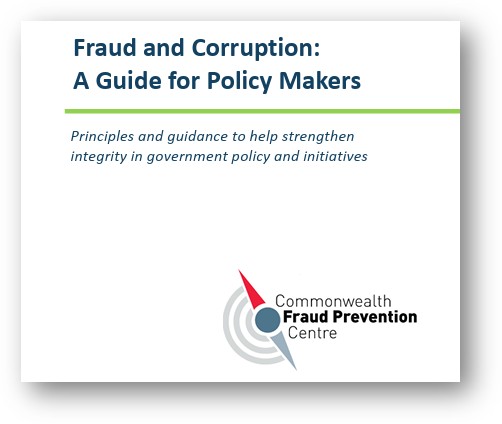
The Australians are, once again, providing global thought leadership on counter fraud and anti-corruption practices. In May 2025, the Commonwealth Fraud Prevention Centre issued, “Fraud and Corruption: A Guide for Policy Makers (Principles and guidance to help strengthen integrity in government policy and initiatives)” available at fraud-and-corruption-guide-for-policy-makers.pdf. This guidance should resonate with counter fraud professionals and policy makers around the globe as they shape fraud and corruption resistant policies. The Centre continues to emphasize the important of designing out fraud and corruption through effective upfront controls.
The Centre’s guide applies a fraud and corruption lens to the Australian Public Service Commission’s Model for Delivering Great Policy. Although based on Australian legal requirements, this policy offers an adaptable framework and familiar language to align sound policy initiatives in any environment. The four elements are:
- Clear on Intent – Policy makers should be clear on policy intent and the role of government. Viewed through a fraud and corruption lens, this means carefully considering how fraud and corruption could undermine the public good you are aiming to achieve and articulating how fraud or corruption may erode that value.
- Well Informed – Policy makers should be forward looking while learning from the past. They should seek multiple and diverse perspectives including from those impacted by the policy. (i.e., evidence based policy making). Viewed through a fraud and corruption lens, this means gathering evidence and insights (beyond check the box stakeholder consultations) and analyzing how the characteristics of the proposed policy might make it more susceptible to fraud or corruption.
- Practical to Implement – Policy makers should work with those involved in implementation and try out multiple options so they have a practical solution and a plan for evaluation. Viewed through a fraud and corruption lens, this means identifying and embedding solutions during the design process (e.g., identity verification, data matching, compliance checks).
- Influential – Policy makers have the right people engaged along with way. Viewed through a fraud and corruption lens, this means framing the policy’s approach to fraud and corruption as a “selling point” that enhances public trust. This can include highlighting the cost of inaction (i.e., loss of tax dollars, reputational damage, etc.).
This guidance is the latest in series of tools made available by the Centre and available on their website Commonwealth Fraud Prevention Centre. More details on designing controls, for example, can be found in the Commonwealth’s Controlling Fraud and Corruption Risk Leading Practice Guide and Fraud Control Catalogue.
If your organization needs expert advice in hardening your defenses and reducing opportunities for fraud or corruption, check out my bio at Bio – BobWestbrooks.com. As a 30-year fraud practitioner and CPA/certified internal auditor, I can assist in designing and testing practical and effective controls. Contact me at BobWestbrooks@outlook.com.